
views
Cleaning the Inside of Your Suitcase

Remove all the items from your suitcase. Make sure that your suitcase is completely empty before you begin to clean it. Be sure to check in the pockets and in any removable liners for overlooked items.
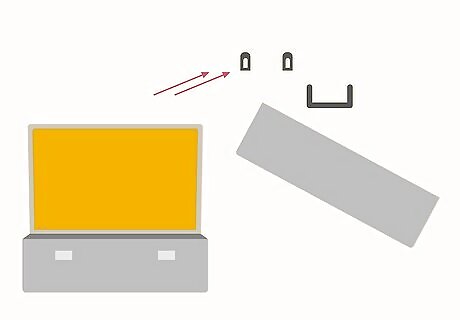
Remove any detachable liners or storage. Some suitcases have liners that can be removed entirely from the rest of the bag, as well as additional storage pockets. Remove these components and set aside.

Vacuum the inside. Remove dirt, dust, crumbs, and other small debris from your suitcase by vacuuming the inside. You can use a hand vacuum or a standard vacuum’s hose attachment. Make sure you vacuum within any pockets or liners
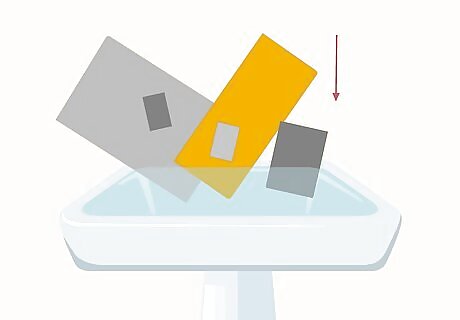
Wash any removable liners or pockets. If the manufacturer’s tag indicates that machine washing is safe, wash it according to the instructions. If the tag is missing or if it says that hand washing is required, fill a sink with warm water and a small amount of mild laundry detergent. Clean the removable components by hand and allow them to air dry.
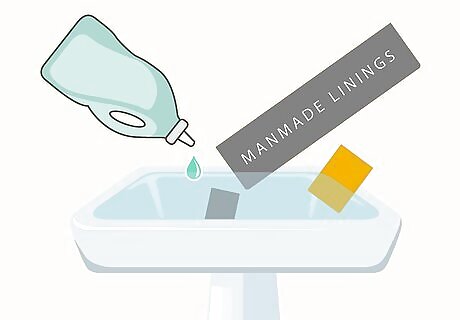
Wash manmade linings with detergent and water. Nylon and other manmade lining can be washed gently with a damp washcloth and mild laundry detergent. If the outside of your suitcase is leather, be very careful not to drip any water on the outside, as this can damage it.
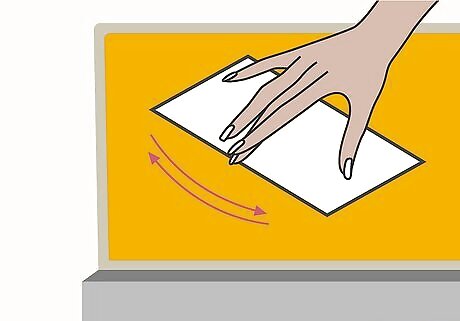
Spot-clean canvas and linen linings. Spot-clean the inside with baking soda and water, using an old toothbrush to scrub away stains or dirt. Dry the bag immediately with a hand dryer.
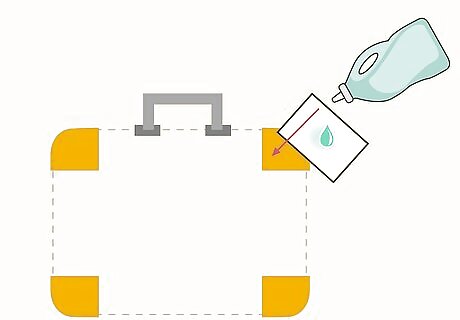
Wipe off hard plastic linings. Hard plastic can be wiped clean with a damp washcloth and mild soap. Dry your suitcase immediately with a fresh towel to prevent any water marks from forming.
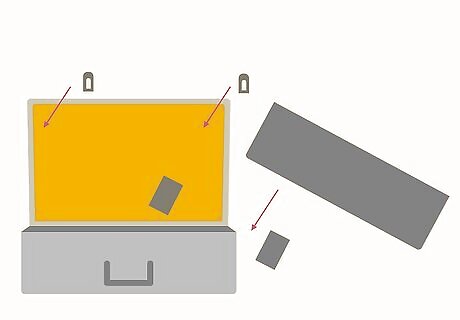
Replace the removable components. Once your suitcase and all of its components are dry, replace any removable liners or storage.

Air out your suitcase. If you plan to skip cleaning the outside altogether, or intend to wait before cleaning it, air out your suitcase by allowing it to stand open for at least one day. This prevents the buildup of smells or mildew caused by any remaining moisture. Close the suitcase when you are ready to clean the outside.
Cleaning the Outside of Your Suitcase
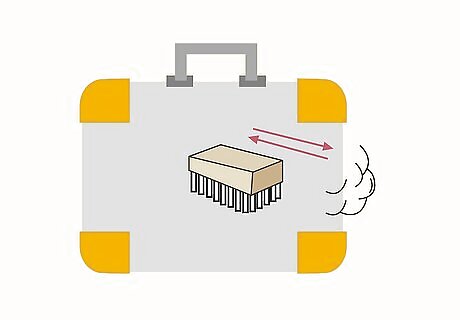
Remove dust and dirt from the outside. Remove any debris from the outside of your suitcase by brushing it with a short broom or cleaning brush. For larger soft-bodied bags, a hand vacuum or the hose attachment for a regular vacuum may be more effective. If your suitcase is not leather and is covered in pet hair, lint, or another form of difficult-to-remove debris, use a lint roller.
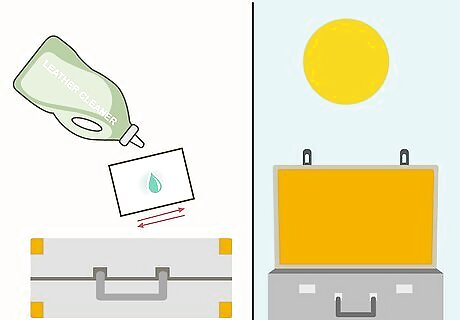
Clean leather with a leather cleaner. Follow up with a leather conditioner and allow the suitcase to air-dry out of direct sunlight. For significant staining, bring the bag to a specialty leather cleaner.
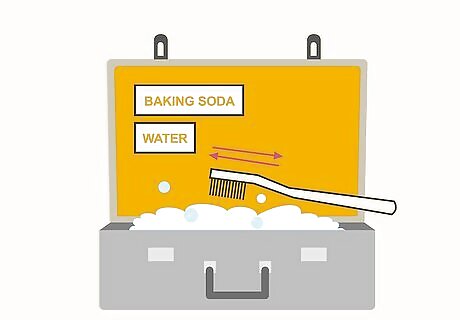
Spot-clean canvas and linen. Just as you did with the inside, spot-clean the inside with baking soda and water, using an old toothbrush to remove the stains or dirt. Dry the bag immediately with a hand dryer.
Clean soft-bodied manmade bags with detergent and water. Clean gently with a damp washcloth with a mild laundry detergent. Allow to air-dry.

Wipe hard plastic. Hard plastic can be wiped clean with a damp washcloth and mild soap. Dry the outside immediately with a fresh towel to prevent water marks. If there is scuffing, scrub with an eraser cleaning pad.
Clean aluminum suitcases with water. Some soaps can cause streaks or marks on aluminium surfaces, so cleaning with warm water alone is best. For stubborn marks or scuffs, use an eraser cleaning pad. Dry it immediately with a fresh towel to prevent water marks.

Clean wheels, zippers, latches, and other hardware. Wash your suitcase’s hardware with warm, soapy water and a washcloth. Be sure to rotate the wheels completely to remove any dirt, mud, or other debris. Dry the hardware immediately to prevent water damage. For metal hardware with scratches, scrub the damaged area with a steel wool scrubber.

Air out your suitcase. When your suitcase has been completely cleaned, open it and allow to air out for at least a day. Be sure to open any pockets or other additional storage spaces!
Protecting Your Suitcase
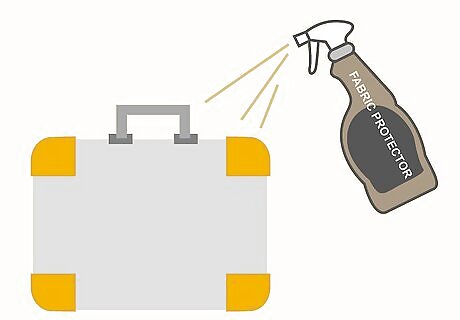
Apply a fabric protector spray. If your suitcase is made of fabric, you can protect it from further stains or damage by applying a fabric protector spray. Be sure to read the instructions thoroughly before using, as some materials, such as leather, can be damaged by fabric protectors.

Treat metal hardware with lacquer. Metal hardware on your suitcase can be protected against scratches by using a metal lacquer or clear nail polish.

Spray with air freshener. Fabric suitcases that have had strong-smelling items spilled in them or that have been stored for a long period of time often develop unpleasant odors. Prevent this by first spraying with a liquid air freshener such as Febreze. Be careful not to spray air fresheners directly on leather!
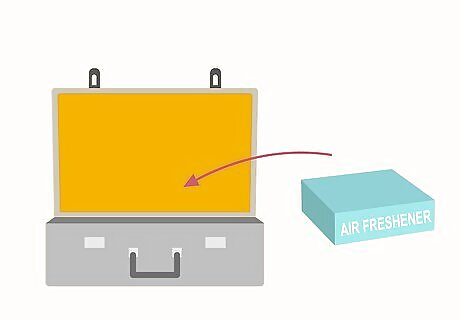
Place a solid air freshener inside your suitcase. Before storing your suitcase, place a solid air freshener inside to prevent musty smells from developing. You can use commercial solid air fresheners, dryer sheets, unused bars of soap, cedar chips, or other similar items.
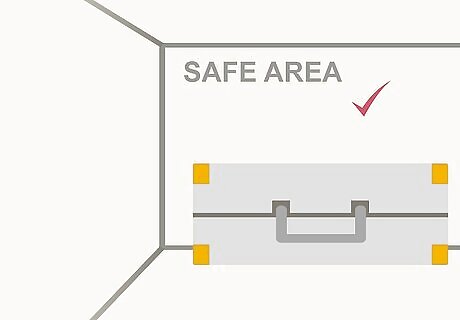
Choose a safe area to store your suitcase. Many suitcases become damaged through poor storage. When putting your suitcase away, check the area thoroughly for leaks, musty odors, and mildew, and store it elsewhere if necessary.

Prevent damage to your suitcase while in storage. Do not place heavy items on top of your suitcase, as this can warp it over time. If your suitcase is leather, aluminum, or hard plastic, wrap it in cloth to prevent scratches and scuffs while in storage.















Comments
0 comment